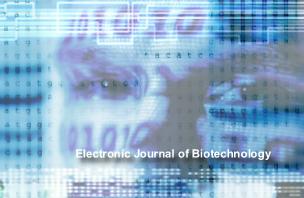
|
Electronic Journal of Biotechnology
Universidad Católica de Valparaíso
ISSN: 0717-3458
Vol. 27, No. 1, 2017, pp. 44-48
|
 Bioline Code: ej17033
Bioline Code: ej17033
Full paper language: English
Document type: Research Article
Document available free of charge
|
|
|
Electronic Journal of Biotechnology, Vol. 27, No. 1, 2017, pp. 44-48
| en |
Utilization of a waste glycerol fraction using and reusing immobilized Gluconobacter oxydans  ATCC 621 cell extract ATCC 621 cell extract
Stasiak-Różańska, Lidia; Błażejak, Stanisław; Gientka, Iwona; Bzducha-Wróbel, Anna & Lipińska, Edyta
Abstract
Background: Depletion of petroleum resources has enforced the search for alternative sources of renewable
energy. Introduction of biofuels into the market was expected to become a solution to this disadvantageous
situation. Attempts to cover fuel demand have, however, caused another severe problem—the waste glycerol
generated during biodiesel production at a concentration of approximately 10% w/w. This, in turn, prompted a
global search for effective methods of valorization of the waste fraction of glycerol.
Results: Utilization of the waste fraction at 48 h with an initial glycerol concentration of 30 g·L-1 and proceeding
with 62% efficiency enabled the production of 9 g·L-1 dihydroxyacetone at 50% substrate consumption. The
re-use of the immobilized biocatalyst resulted in a similar concentration of dihydroxyacetone (8.7 g·L-1) in
two-fold shorter time, with an efficiency of 85% and lower substrate consumption (35%).
Conclusions: The method proposed in this work is based on the conversion of waste glycerol to dihydroxyacetone
in a reaction catalyzed by immobilized Gluconobacter oxydans cell extract with glycerol dehydrogenase activity,
and it could be an effective way to convert waste glycerol into a valuable product.
Keywords
Biodiesel; Biofuels; Conversion of waste glycerol; Dihydroxyacetone; Fuel demand; Glycerol dehydrogenase; Glycerol waste fraction valorization; Immobilized cell extract; Renewable energy; Substrate consumption; Utilization
|
| |
© Copyright 2017 - Pontificia Universidad Católica de Valparaíso
Alternative site location: http://www.ejbiotechnology.info
|
|
